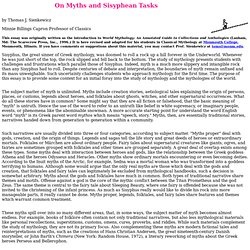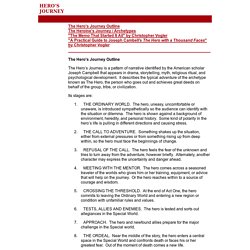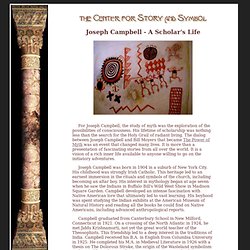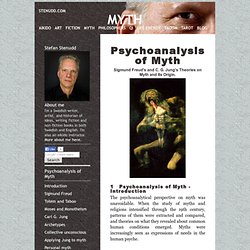

Scientists Trace Society's Myths to Primordial Origins. The Greek version of a familiar myth starts with Artemis, goddess of the hunt and fierce protectress of innocent young women.

Artemis demands that Callisto, “the most beautiful,” and her other handmaidens take a vow of chastity. Zeus tricks Callisto into giving up her virginity, and she gives birth to a son, Arcas. Zeus’ jealous wife, Hera, turns Callisto into a bear and banishes her to the mountains. Meanwhile Arcas grows up to become a hunter and one day happens on a bear that greets him with outstretched arms. Not recognizing his mother, he takes aim with his spear, but Zeus comes to the rescue.
Once Upon a Time . . . Fairy Tales Shape Our Lives. On Sisyphus and Sisyphean Tasks. On Myths and Sisyphean Tasks by Thomas J.

Sienkewicz Minnie Billings Capron Professor of Classics This essay was originally written as the introduction to World Mythology: An Annotated Guide to Collections and Anthologies (Lanham, Md: The Scarecrow Press, Inc., 1996.) It is here revised and adapted for his students in Classical Mythology at Monmouth College, Monmouth, Illinois. Sisyphus, the great sinner of Greek mythology, was doomed to roll a rock up a hill forever in the Underworld. The subject matter of myth is unlimited. Such narratives are usually divided into three or four categories, according to subject matter. These myths spill over into so many different areas, that, in some ways, the subject matter of myth becomes almost endless. Seeking a distinction between myth and history does not really help Sisyphus either.
The Mythic Symbology of Release. The Hero's Journey. Hero's journey. "A Practical Guide to Joseph Cambell’s The Hero with a Thousand Faces" by Christopher Vogler © 1985 “There are only two or three human stories, and they go on repeating themselves as fiercely as if they had never happened before.”

In the long run, one of the most influential books of the 20th century may turn out to be Joseph Campbell’s THE HERO WITH A THOUSAND FACES. The book and the ideas in it are having a major impact on writing and story-telling, but above all on movie-making. Filmmakers like John Boorman, George Miller, Steven Spielberg, George Lucas, and Francis Coppola owe their successes in part to the ageless patterns that Joseph Campbell identifies in the book. The ideas Campbell presents in this and other books are an excellent set of analytical tools.
With them you can almost always determine what’s wrong with a story that’s floundering; and you can find a better solution almost any story problem by examining the pattern laid out in the book. The Power Of Myth - The Heros Adventure (Part 1) Joseph Campbell - A Scholar's Life. For Joseph Campbell, the study of myth was the exploration of the possibilities of consciousness.

His lifetime of scholarship was nothing less than the search for the Holy Grail of radiant living. The dialog between Joseph Campbell and Bill Moyers that became The Power of Myth was an event that changed many lives. It is more than a presentation of fascinating stories from all over the world. It is a vision of a rich inner life available to anyone willing to go on the initiatory adventures.
Joseph Campbell was born in 1904 in a suburb of New York City. Campbell graduated from Canterbury School in New Milford, Connecticut in 1921. During 1926, Campbell also took classes at the New York City Religious Science Church taught by one of the founders of that movement, Fenwick Holmes. At the University of Munich (1928-29), Campbell studied how Sigmund Freud and Carl Jung used myth in psychology.
Joseph Campbell was professor of literature at Sarah Lawrence College 1933-1972. Finding Joe. Psychoanalysis of MYTH - Freud and Jung. The psychoanalytical perspective on myth was unavoidable.

When the study of myths and religions intensified through the 19th century, patterns of them were extracted and compared, and theories on what they revealed about common human conditions emerged. Myths were increasingly seen as expressions of needs in the human psyche. As such, they were rewarding fields of study of human nature, especially since there was a quickly growing mass of documentation of myths from around the world, as well as a quickly increasing knowledge of religions and traditions among distant and obscure cultures. Jungian Archetypes.